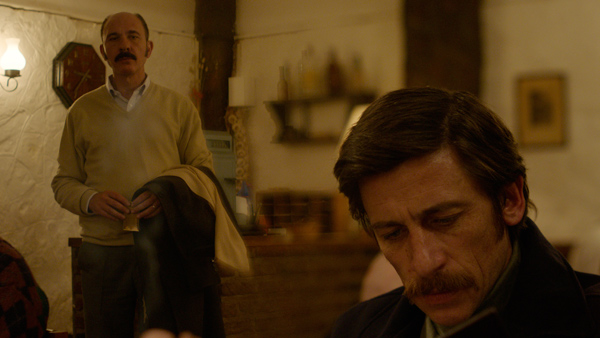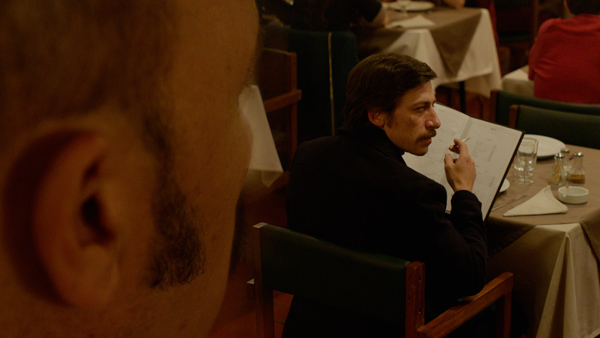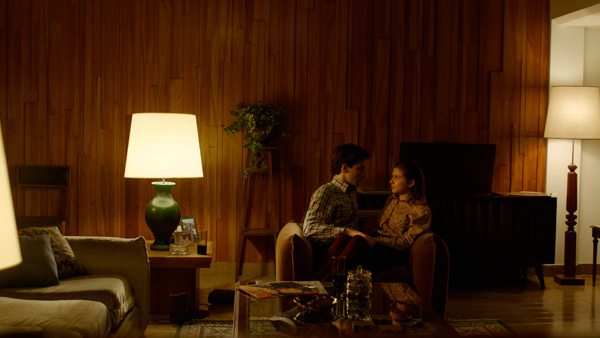IONCINEMA.com’s IONCINEPHILE of the Month feature focuses on an emerging voice from the world of cinema. This month, we are pleased to introduce Argentinian born filmmaker Benjamín Naishtat – who premiered his third feature film (technically second) in the Platform section at the 2018 Toronto International Film Festival. Starring Darío Grandinetti, Andrea Frigerio, the enigmatic Alfredo Castro and the unforgettable and lingering presence of Diego Cremonesi, Rojo was a triple winner at the San Sebastián Film Festival. Distrib Films US opens the film Friday, July 12 at Film at Lincoln Center and the Quad Cinema in New York City, and on Friday, July 19 at the Laemmle Royal in Los Angeles. We previously had the chance to meet the filmmaker for a lengthy interview at the 2018 Marrakech Intl. Film Festival so we’re happy to circle back for seconds. Here is our profile on the filmmaker and as per usual, make sure to check out the second portion of this profile – where Benjamín lists his top ten films of all time.
Benjamín Naishtat
Eric Lavallée: During your childhood, what films were important to you?
Benjamín Naishtat: I belong pretty much to the VHS generation. Since an early age it was tremendously exciting for me to go to the video store and spend hours just trying to make my mind on what to choose. My early cinephilia was mostly focused on genre, particularly horror and sci-fi. I didn’t care much for directors then, nor for actors really, I would rather look for strangeness, other worlds, and scary moments. As a teenager I started going to more sophisticated video-clubs, that would actually require to go beyond the area where I lived. And so it was that I started discovering names like Jarmusch, Spike Lee, Wong Kar-wai. Of course I used to go to the cinema a lot, it would be the leisure activity with both of my parents. Come to think of it, it was probably because they were separated that I would see a film on Fridays and another one on Sundays. During high school the american multiplex cinemas arrived in Argentina and sometimes I skipped class to see two films in a row, which you could do by paying just one ticket and then sneaking into the next theater.
Lavallée: During your formative years, what films and filmmakers inspired you and how did you make the leap to your time at Universidad del Cine in Buenos Aires? Do you recall the moment where you thought….I’d like to be a filmmaker?
Naishtat: The thought of being a filmmaker occurred when I was eleven and I can tell you that because it was at that age that my grandmother and my dad finally bought me a videocamera. It was an old 8mm samsung camcorder. I would do action shorts with fellow classmates. There would be a lot of blood and shots on them. I actually lost those tapes. When I finished high school I tried going to the national film school, the ENERC, but I didn’t pass the entrance exam. Instead, I went to the Universidad del Cine, which at the time was quite reputed because so many of the new Argentine cinema filmmakers had studied there. They generously gave me a 50% scholarship. It was a good school, where I met some good friends and collaborators with whom I still work today.

Lavallée: Having spoken to you late last year I got the sense that history, politics and literature are important to you. Did you have other callings outside of film?
Naishtat: I thought seriously of trying to become a creative writer while in high school. Then it felt it would be a lonesome path, and I was already a bit of a freaky teenager, so in the end film and its collective adventure vibe where the choice. Also thought of trying to be some sort of diplomat, since I dreamed of travelling. But it was thanks to film that I got to see much of the world actually. History became an interest a bit later, when I was already on film. At some point history appeared to me as the most vibrant and relevant source of stories and dramaturgy that one could ever dream of.
Lavallée: One of the visual candy pleasures we find in Rojo are the two-shots that include a mix of Alfredo Castro, Darío Grandinetti and/or Diego Cremonesi. How early on in the process did you decide you’d visual frame your players in such a manner?
Naishtat: It was an idea that I developed thanks to the collaboration with Pedro Sotero, the marvellous DoP. He showed me some stills of Jaws where there is a use of the split diopter filter, and I instantly knew that we needed exactly that to create the antagonisms of ROJO.
Lavallée: Through production and costume design Rojo explores classism. Could you cite one example were an prop aided you in carving out or enhance the way you had imagine a specific character trait that details social status?
Naishtat: Well, in the film there are two middle class homes. That of Claudio, the lawyer and lead character, and that of the people who are missing and whose place is going to be illegally taken by Claudio and his friend. At Claudio’s, you see a lot of aspirational things like a china set, a big TV (for 1975), interior plants, and so on. At the missing family, you see books, pictures of past generations, and austere yet elegant living-room. So you get to see a middle class that accepts itself as such, and one that needs to feel bigger in order to create the image they want to reflect.
Lavallée: Can you discuss the collaborative process you had with Julieta Dolinsky…
Naishtat: It was obviously a major challenge of this project to get the right 70s look. In many films of the 70s I get the feeling that there is a retro or vintage vibe instead of a truly, widely researched recreation of how the decade looked like at a particular place. For ROJO, I put together a wonderful artistic team that included also a historian in the aim of capturing exactly how a provincial town looked like in Argentina around 1975. Julieta Dolinsky and her art direction team did a masterful job at keeping our 70s right, often by going above and beyond when looking for the right props, wallpaper textures, furniture and so on. She also played a vital role during the location scouting phase by doing a thorough research on which architectural style and construction techniques were according to 1975 and prior.

Lavallée: Can you discuss the collaborative process you had with cinematographer Pedro Sotero…
Naishtat: Pedro was a wonderful collaborator whom I admired from his work with both Kleber Mendonca Filho and Fellipe Barbosa. He comes from the Pernambuco State industry in Brazil, so he and his crew where strange to the Argentine way of producing. Luckily we adjusted just fine. We spent about a month conducting research and figuring out the kind of shots that would give the impression to viewers that not only would it be a film about the 70s but also a film that would feel like if made around that time. Pedro brought creative and bold ideas on how to grip the camera for car shots, that he detected by reading about the shootings of films like The French Connection or The Conversation. He introduced me to the split diopter filter which ended up being a signature of his work in ROJO and probably had a lot to do with him winning the Best Cinematography award at San Sebastian. Ultimately Pedro managed to create a completely non-naturalistic lighting for the various nocturnal exterior scenes we did, using old fashioned tungsten and sodium, which gave us an analogical feel that we reinforced by adding some actual film grain over the video sequences.

Lavallée: Can you discuss the collaborative process you had with Costume Designer Jam Monti…
Naishtat: I’ve been working with Jam Monti as a costume designer for a while now, together we did Historia del Miedo (2014) and El Movimiento (2015). He has a fantastic talent to reading scripts and guessing exactly what one is seeking for each character´s composition. ROJO being a project in which we intended suggesting much more than what is actually said in terms of class tensions and social aspirations, costume design played an essential role at underlining who is who in the fictional provincial town of Granada where the action is set.


